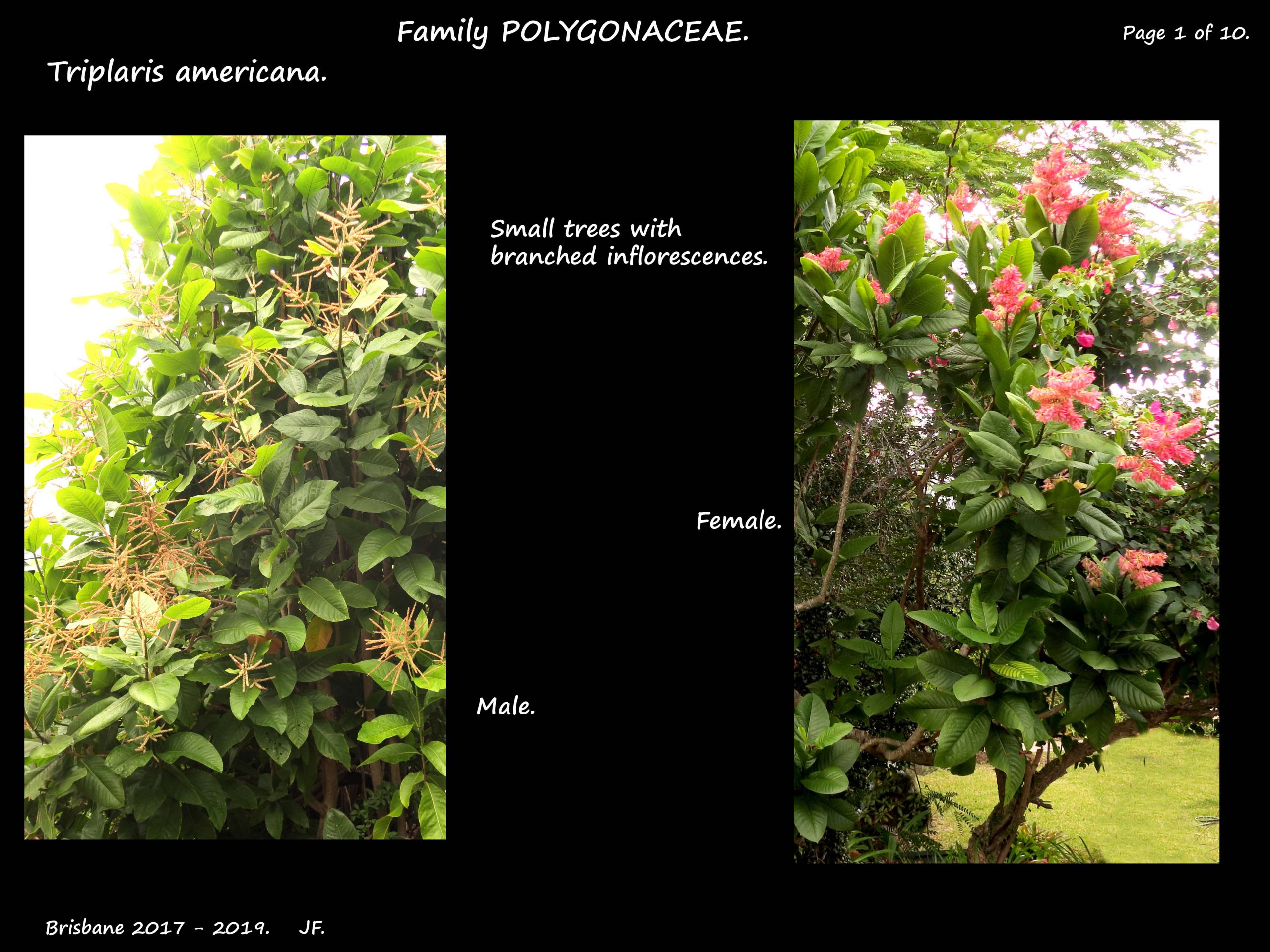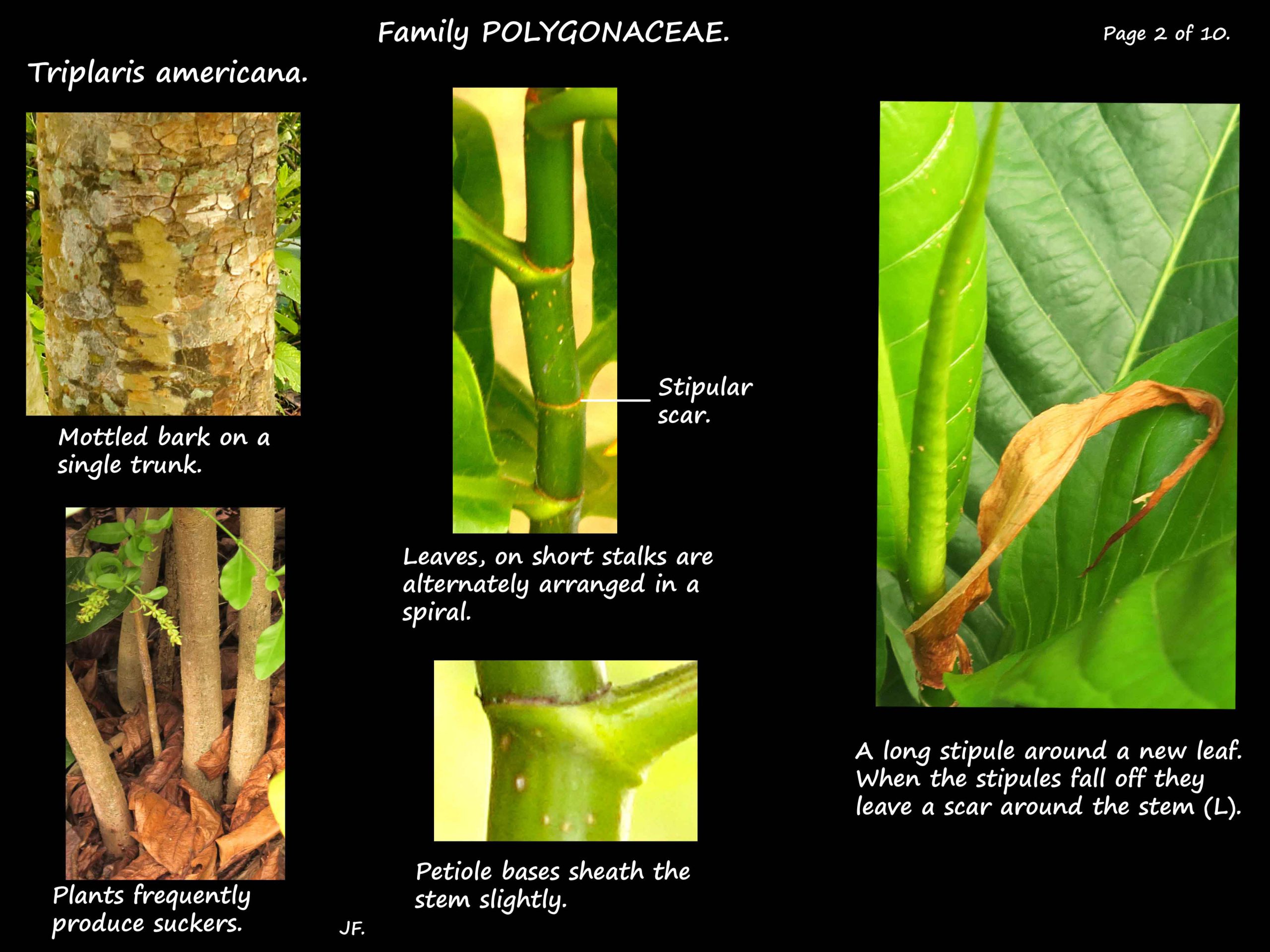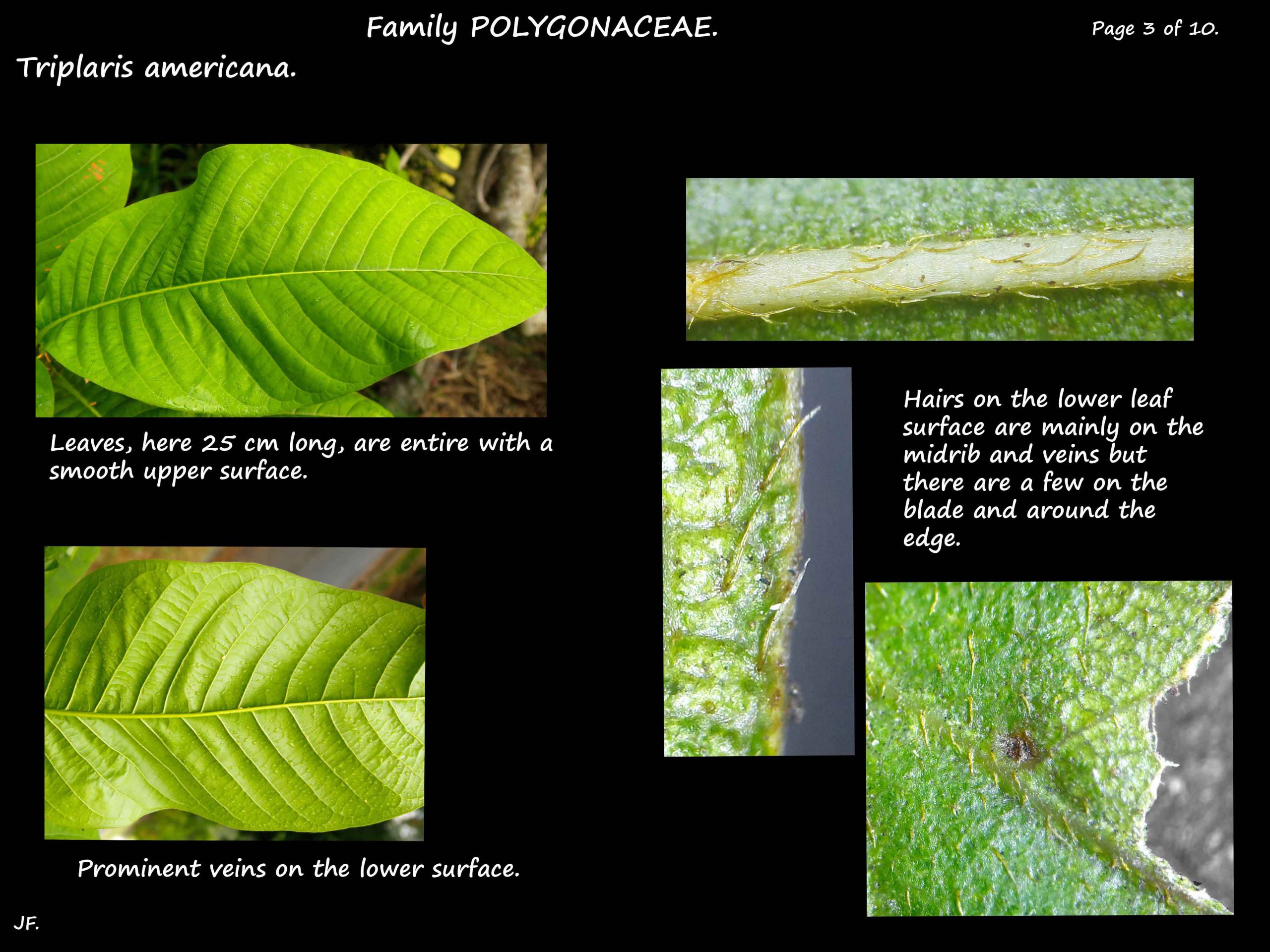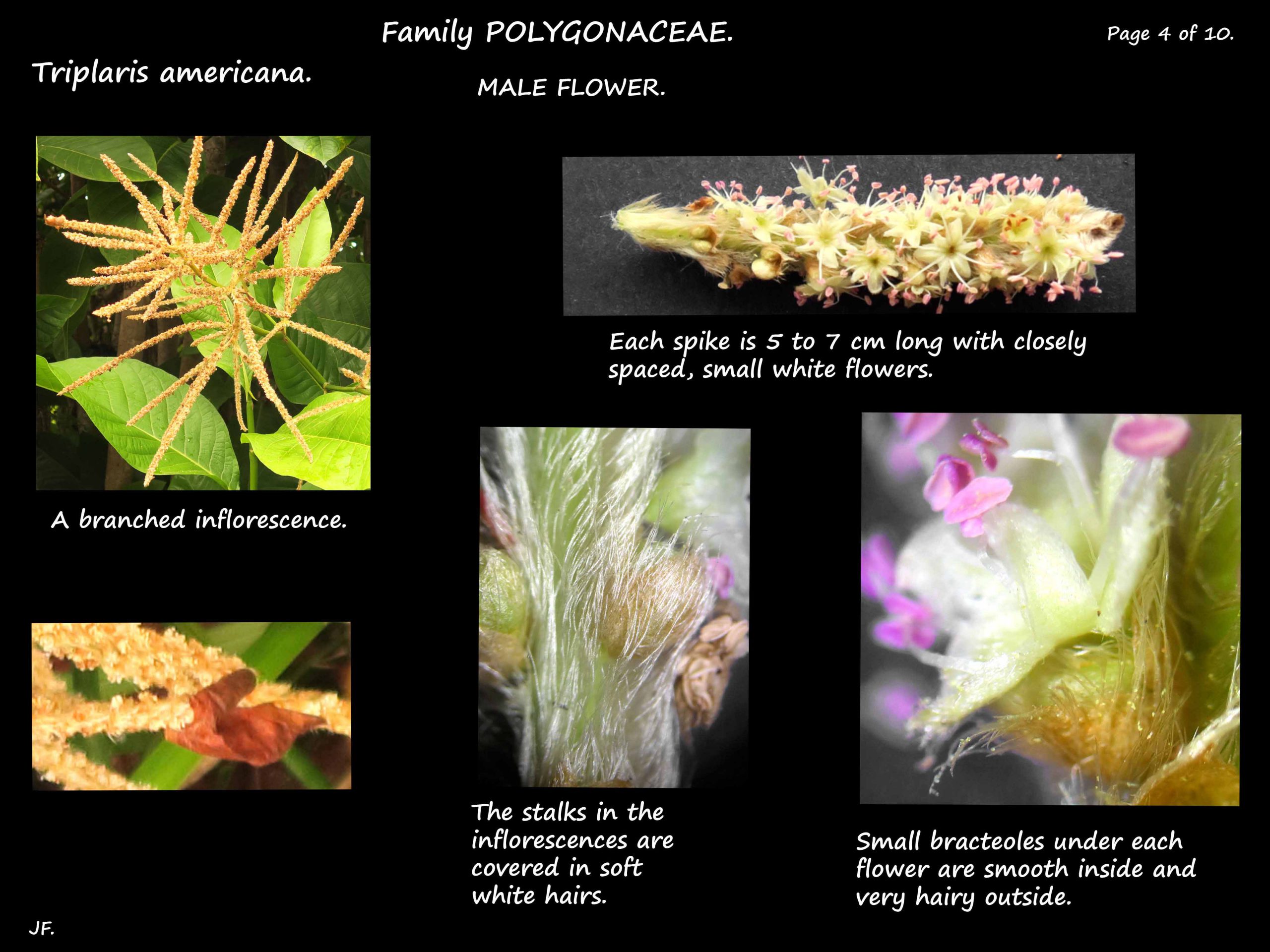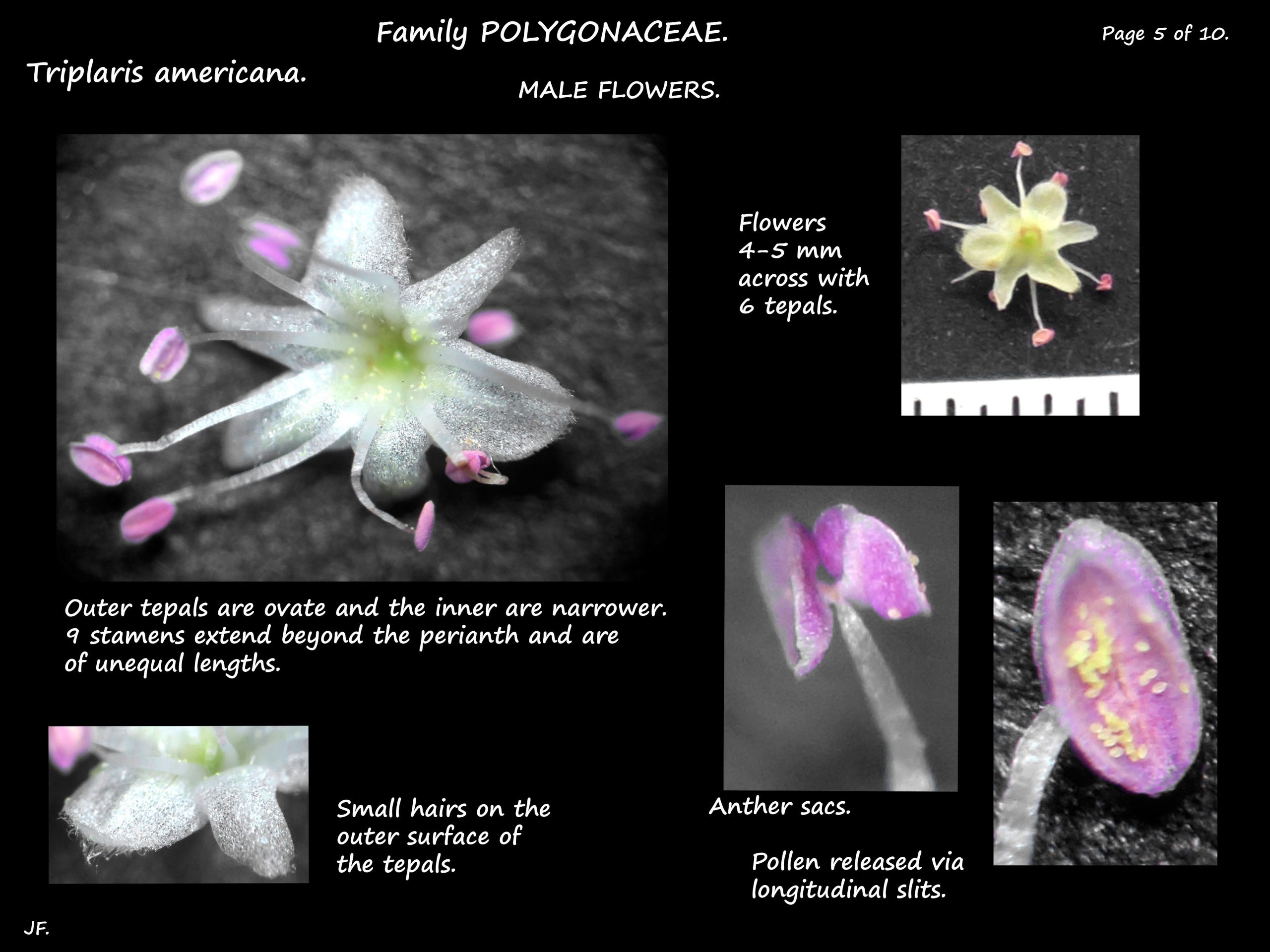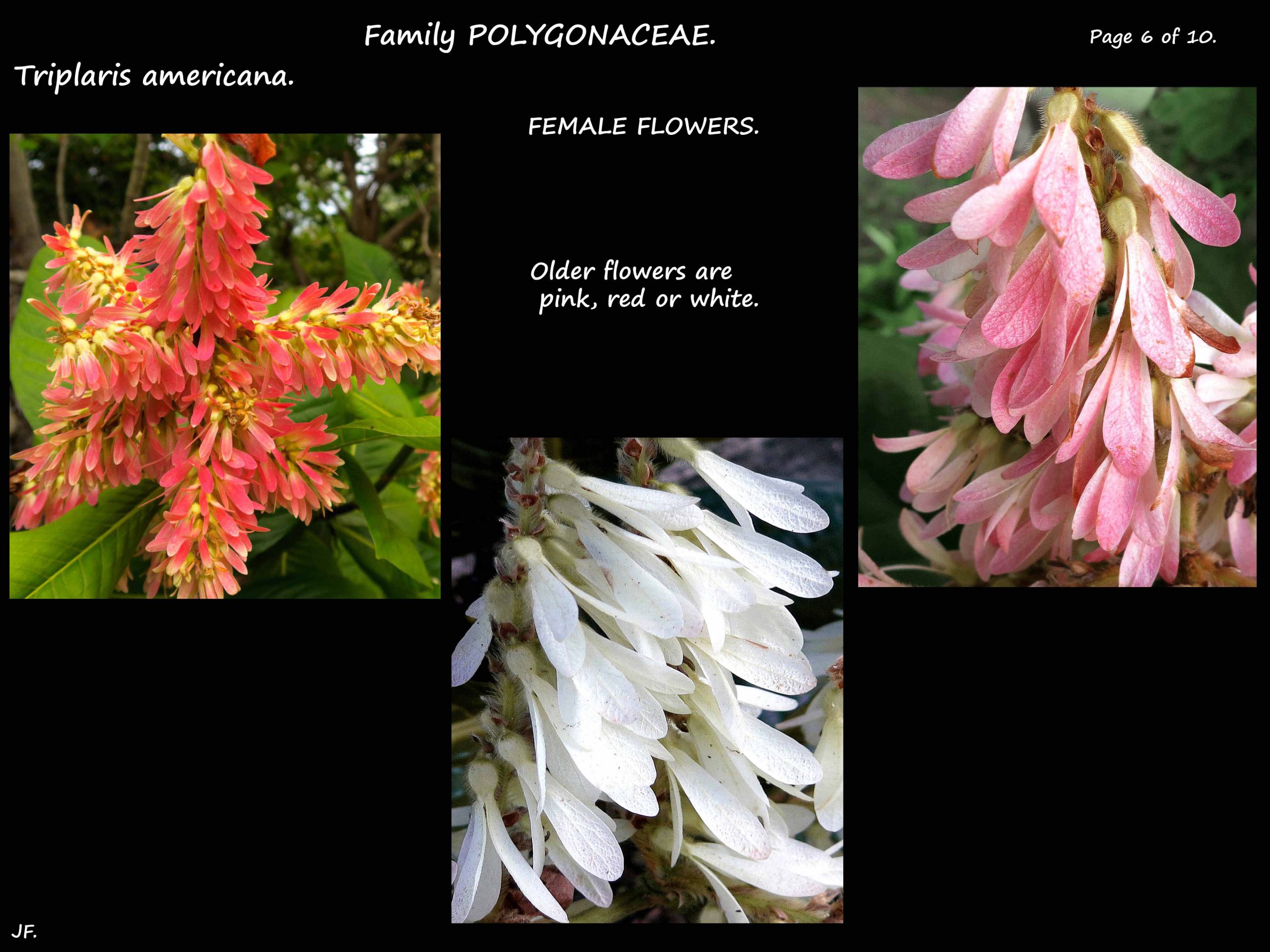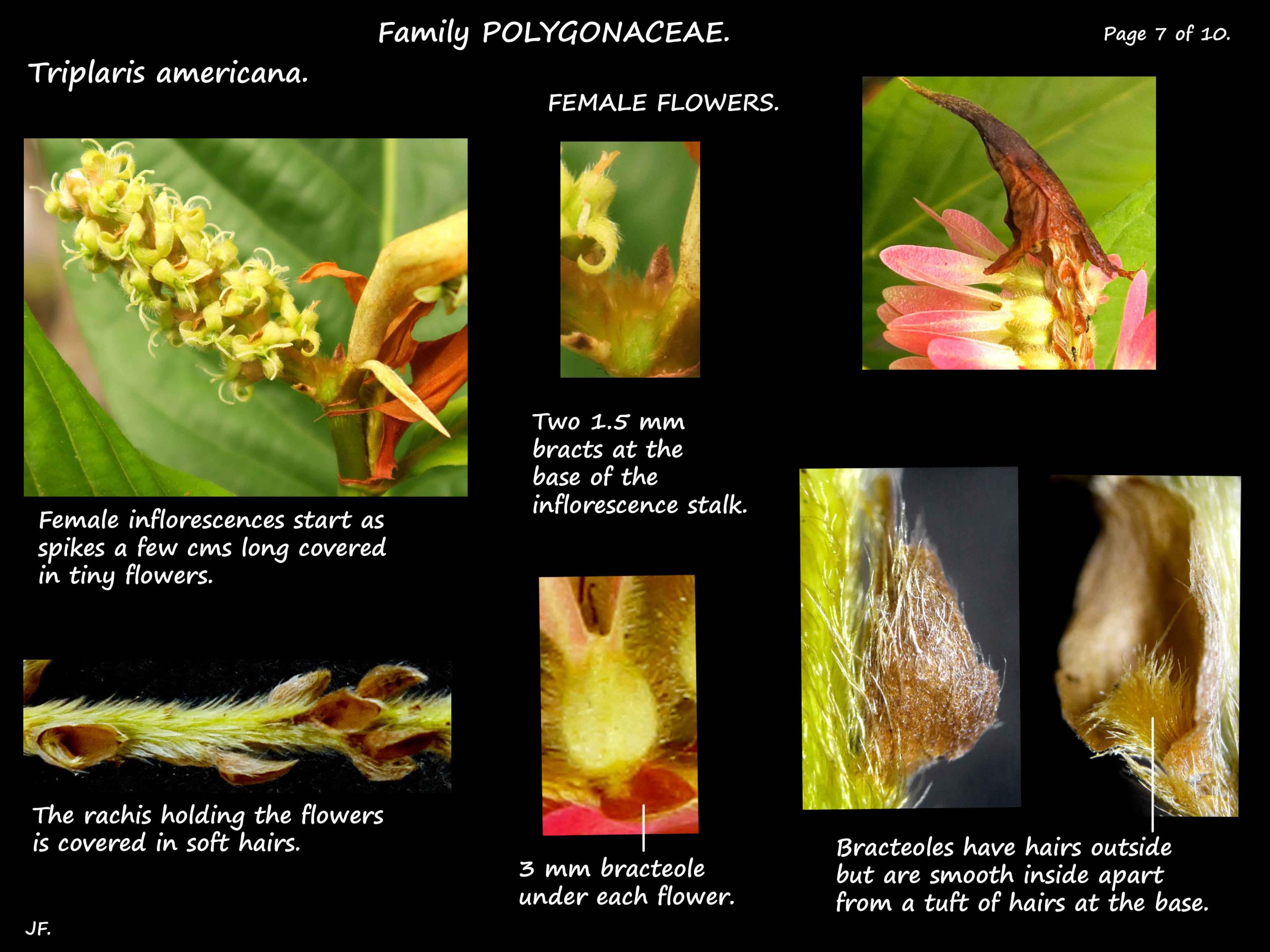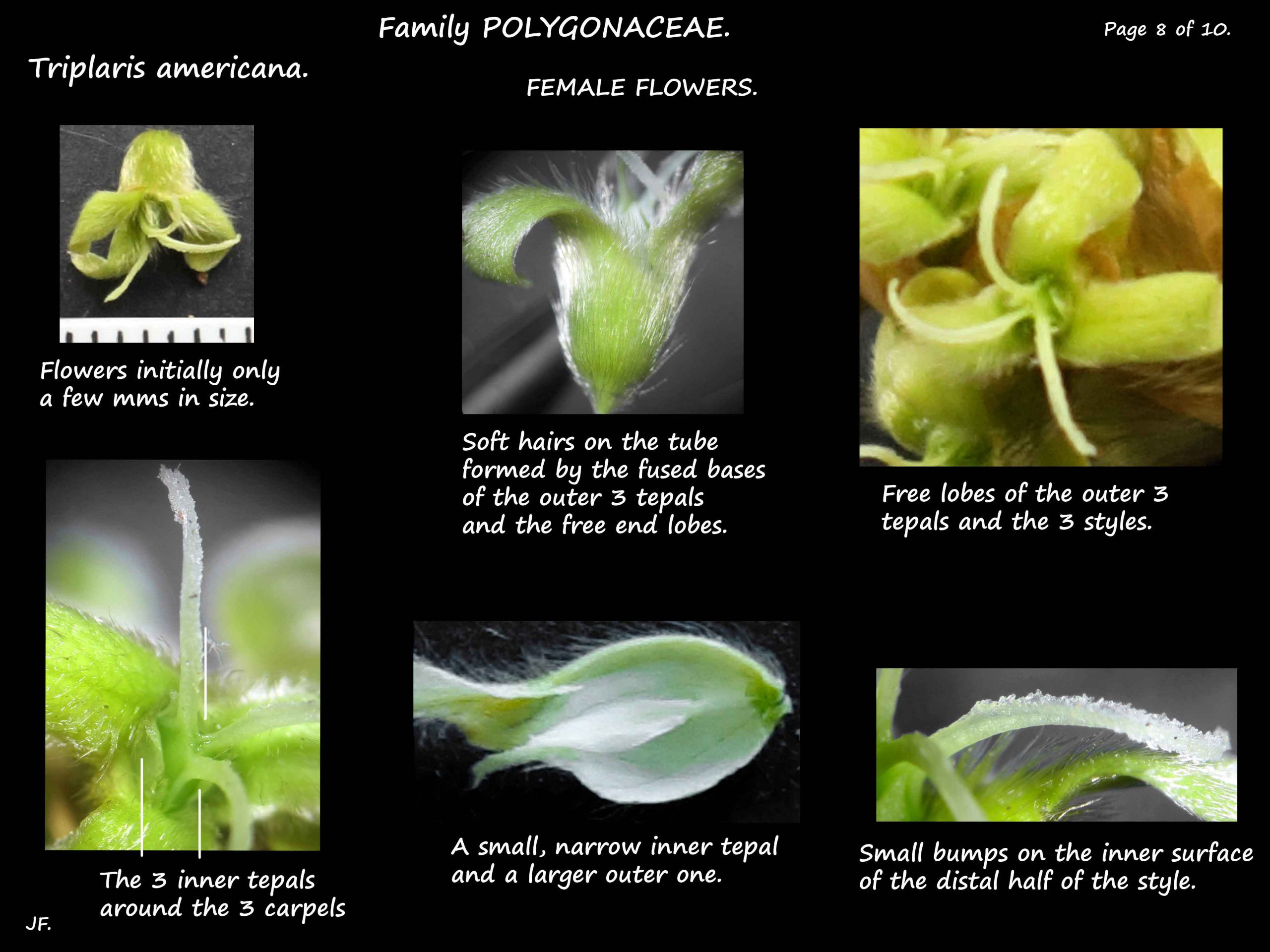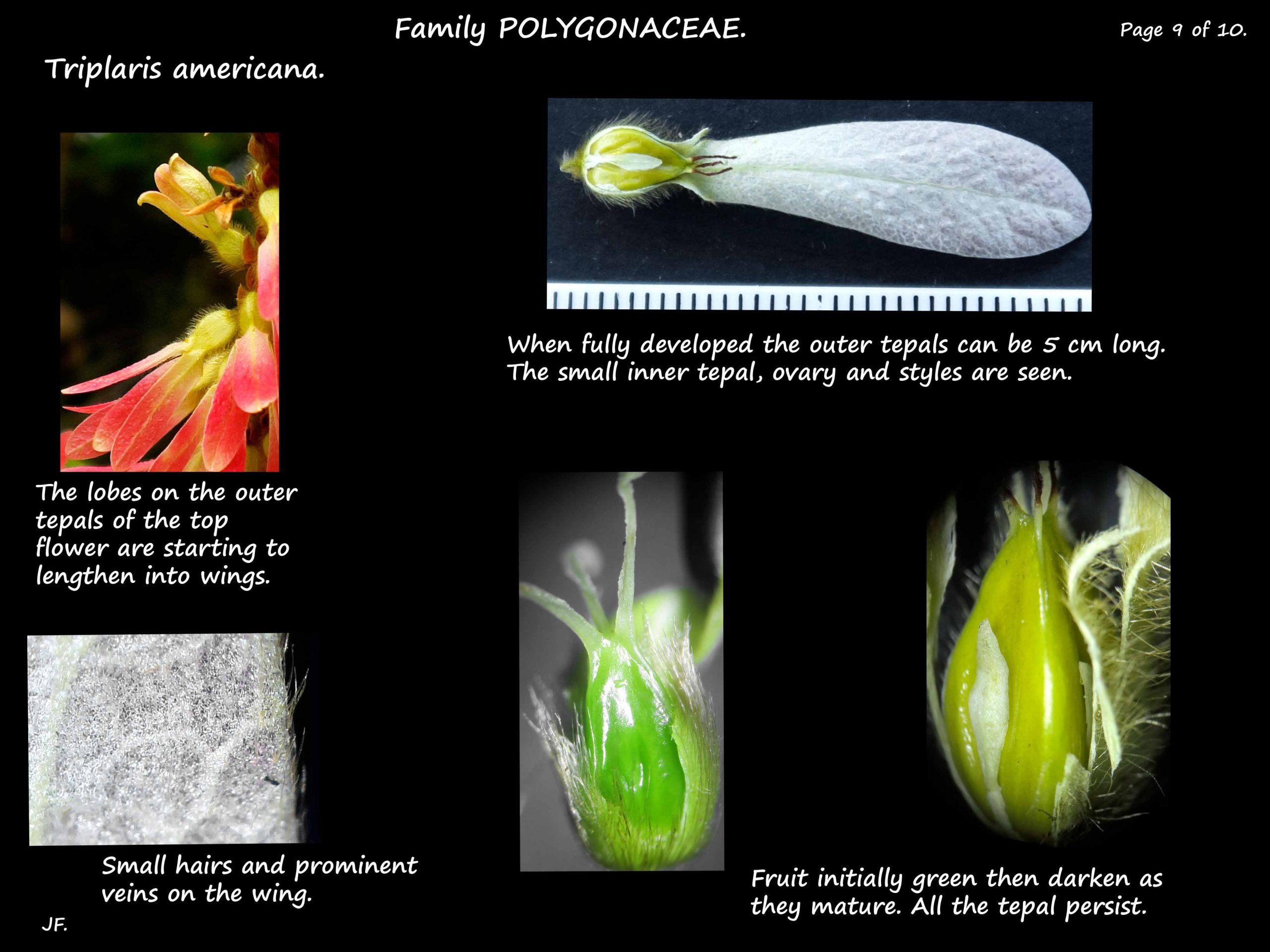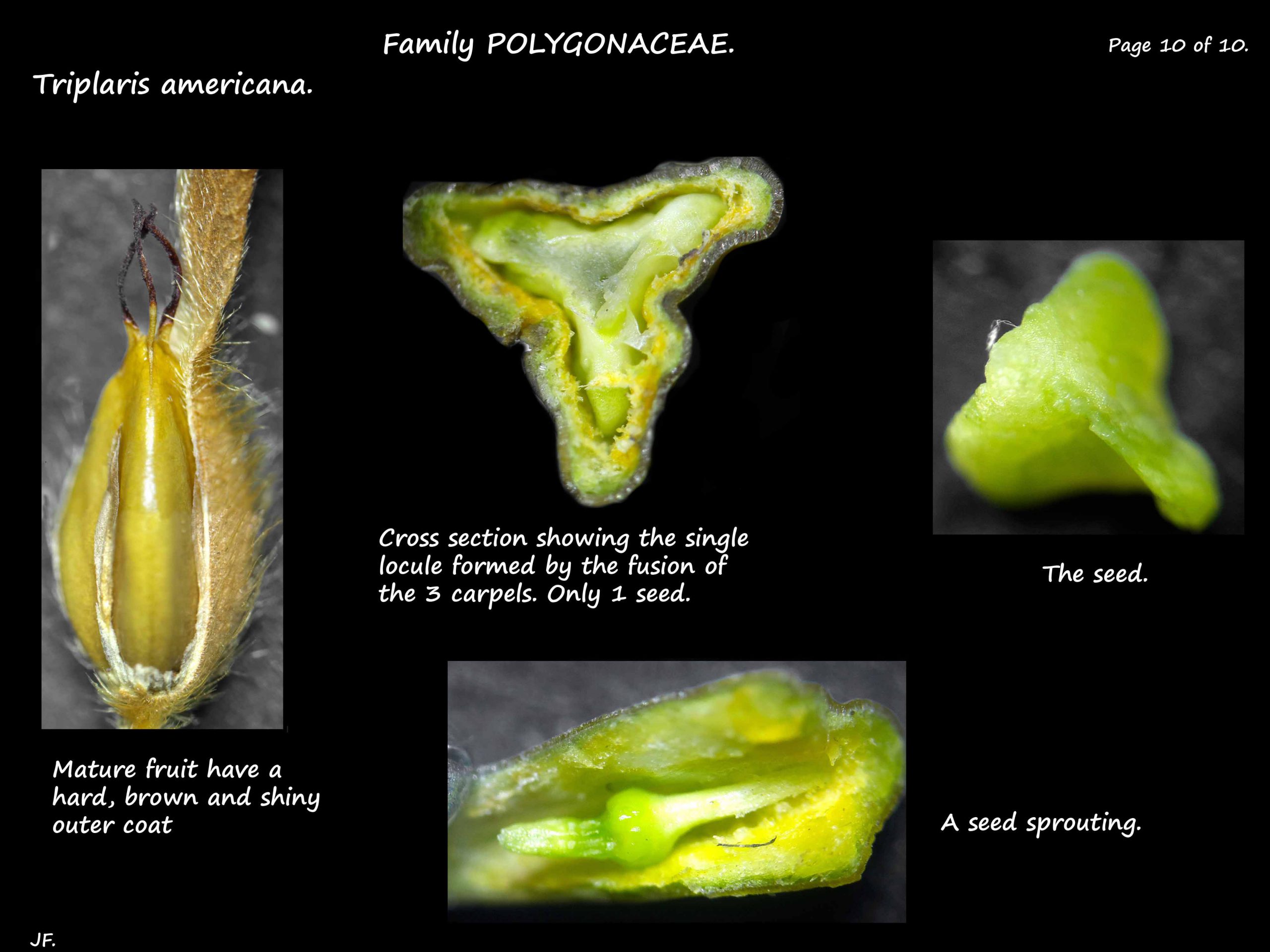Triplaris americana – Ant tree.
Family Polygonaceae.
Known as Ant Trees as, in its native South America, aggressive ants live in its hollow branches.
Scattered populations are found in northern Queensland and it is occasionally used in gardens.
In many places it is a noxious weed.
Grows as a shrub or tree to 30 m high with a smooth, mottled grey trunk.
It is fast growing, sometimes produces suckers and when cut the stump may put out many shoots.
The oval to oblong leaves are up to around 30 cm long on short stalks.
Long stipules enclose the young leaves then are shed leaving a circular scar on the stem.
The bases of the petioles extend around, and slightly down the stem.
The blades may be smooth or have brownish hairs on the veins underneath.
The prominent veins are pinnate with 20 to 30 lateral pairs.
Trees are either male or female with more females in larger populations.
In Queensland they flower in April to May.
Inflorescences, up to 30 or 35 cm long are branched.
Inflorescence stems are densely covered in soft, greyish-yellow to brown hairs.
There are small bracts at the bases of the inflorescence stalks and bracteoles under individual flowers.
Male flowers.
Flowers have short, or no stalks.
The 3 mm long, ovate bracteoles are smooth inside and densely hairy outside.
Flowers are up to 2.5 mm wide with 6 similar white segments in 2 whorls.
The outer segments are ovate while the inner 3 are narrower.
Even rudimentary carpels are absent.
There are 9 stamens that project beyond the perianth.
Female flowers.
The 1.5 mm long bracts and the roughly 6 mm long bracteoles are all hairy.
The hairy stalks of the individual flowers are around 4 mm long.
The perianth has 6 segments in 2 very different whorls of 3.
The bases of the outer 3 segments are joined to form a tube around 10 mm long.
The tube is urn-shaped or spherical and covered in soft hairs.
The free ends of the segments are lanceolate with pointed tips and spread outwards slightly.
They have soft hairs on both surfaces.
The cream to pink or red lobes develop into wings up to 35 mm long on the seed.
The 3 inner petals are small and narrow being around 7 mm long and 2 mm wide.
They are papery, have a few white hairs and distinct veins.
When fully developed in the fruiting stage the perianth is up to 5 cm long.
The ovary is 3 angled and has 3 styles.
The upper half of the styles have small bumps or warts on the inner surface.
The fruit, up to 10 mm long by 6 mm wide, are pale brown and shiny when mature.
They have 3 vertical grooves in which the small petals lie.
The styles remain attached at the top.
J.F.
